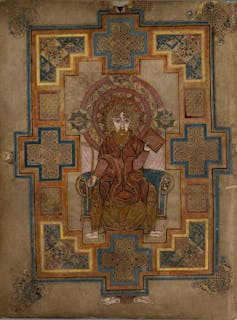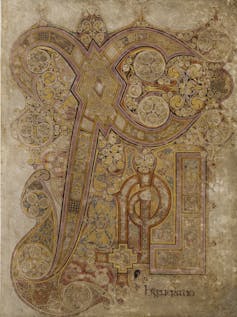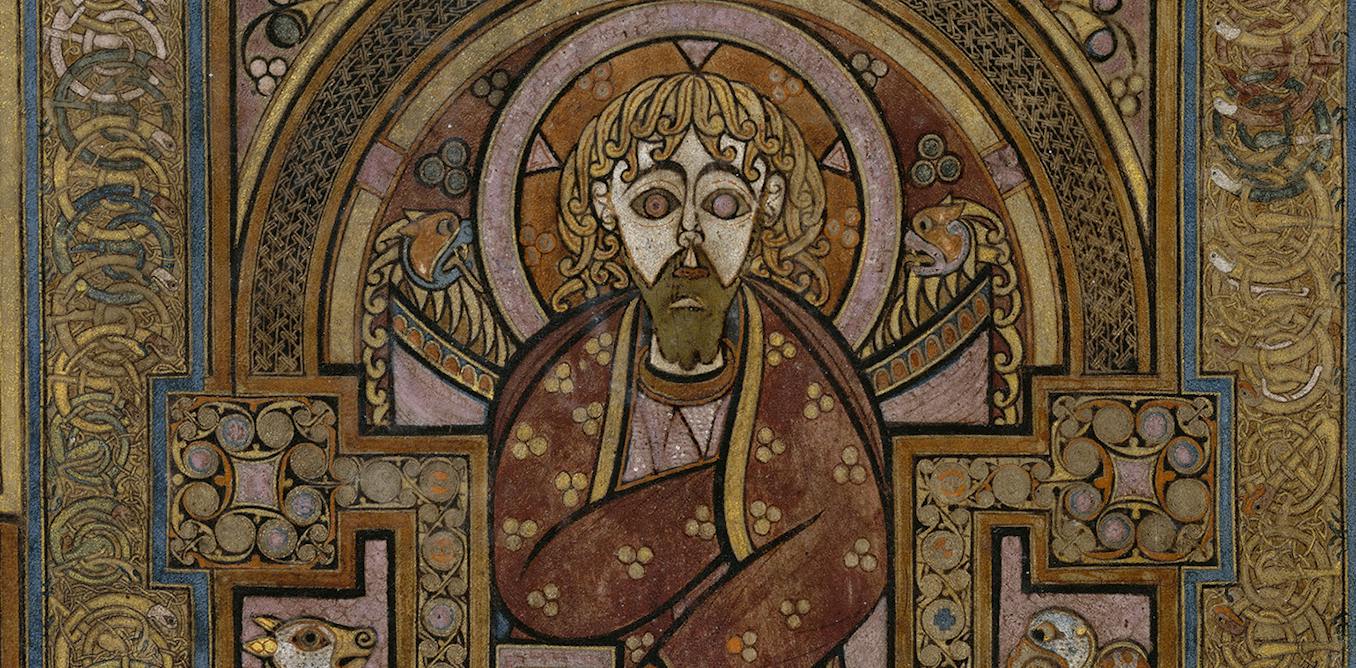|
Getting your Trinity Audio player ready...
|
The Book of Kells is a late-eighth century illustrated copy of the four gospels of the New Testament, traditionally associated with the affiliated monasteries of Iona in the Inner Hebrides of Scotland and Kells in County Meath, Ireland.
Seeing the book at Trinity College Dublin is on the bucket list for most visitors to the city, although many are perhaps unaware of what, exactly, makes it so important. One easy way to explain its importance is to compare the so-called Chi-Rho page in Kells which celebrates the first mention of Christ’s name in the gospels by enlarging the first two letters of his name in the Greek alphabet, χ (Chi) and ρ (Rho) with a similar page in any other contemporary manuscript from the milieu of the Irish Church.
Not infrequently, the response to the Book of Kells page will be: “Monks on mushrooms!” This was also the reaction of Guardian art critic Jonathan Jones recently, when he visited the newly opened Book of Kells Experience, an immersive exhibition at Trinity College Dublin that showcases some of the extraordinary creative highlights of the manuscript.
There is a long history of substance-enhanced art, particularly in association with some of the 20th century western greats – Picasso, Salvador Dali and Jean-Michel Basquiat – and of course an entire counterculture movement in the late 1960s connected with LSD. But this is not typically something we would associate with eighth-century monks.
The pages of The Book of Kells certainly contain some of the elements that have been used to identify drug use in modern and contemporary art.
Courtesy of Trinity College Dublin
The figures of Matthew and John introducing their respective gospels have creepily vacant stares. Letters are formed from distorted men, birds and beasts, their bodies and limbs extended and entangled to create decidedly surrealist openings to important gospel texts. One panel on the page that opens the Gospel of Luke appears to depict an all-male bacchanalian gathering.
Kells under the microscope
Although now faded by 1,200 years of use, the colours in the manuscript still retain some of their original psychedelic intensity. The yellows and purples practically vibrate on the page. The variety and layering of colours is not found in any surviving contemporary northwest-European manuscript.

Courtesy of Trinity College Dublin
Scientific research into the origins of the pigments conducted by Trinity College Dublin’s library conservation department have revealed some of the alchemy involved in their creation.
The intense yellows were created using the poison arsenic sulphide, the reds are toxic red lead and the purples are made from lichen, the purple colour extracted using ammonia, traditionally obtained from urine.
We know that contemporary metalworkers used mercury gilding – a technique that would have led to neurological issues from the inhalation of mercury vapour. Might scribes too have been exposed to side effects from the tools of their trade?
Against this argument are some of the other secrets that the Book of Kells has revealed when studied under a microscope.

Author provided (no reuse)
Underlying some of the most complex – and psychedelic – pages are tiny grids of pin pricks, used as a carefully prepared guide to ensure that the artist maintained perfect symmetry in his work. While at a macro level the art of The Book of Kells appears exuberant and uncontrolled, at a micro level it is an object lesson in pure symmetry, often at a minute scale.
For example, a panel measuring just 80mm x 45mm (right) near the centre of the Chi-Rho page incorporates three lions, four humans, four snakes and 13 birds. Although all are extenuated and locked into a tight mesh of limbs, bodies, wings and heads, the anatomy of each is complete and a symmetry of the bodies is maintained throughout. The precision of planning and control of design does not suggest a scribe under the influence of psychedelic drugs.
Unsolved mysteries
It is only since the digitisation of the manuscript in 2014 that most of us been have able to properly appreciate this aspect of The Book of Kells’ mastery, as much of this detail is nearly invisible to the naked eye.
Artificial lenses are an invention of the late 13th century, so aside from the possible use of the magnifying properties of rock crystal (for which there is no direct evidence) the question does arise as to whether the scribes’ ability to see and work at such a minute scale was enhanced by other means.

Ste Murray
Although more than 400 medical texts survive from the later medieval period in Ireland, relatively few date back to the period when the Book of Kells was made. However, we do know that many monasteries had physicians.
Indeed, a Life of St Columba, written at Iona about 100 years before the Book of Kells was made there, describes a man coming to seek medicines at the monastery. Unfortunately, though, specific references to “cures” for eye ailments, or for enhancing near sightedness are not forthcoming. That is except for St Manchan “the wise” of Lemanaghan, County Offaly, whose hagiography (books written on the lives of saints) describes how his protruding eyes were cured by contact with the corpse of St Molua.
Assuming that this particular cure is an apocryphal one, the mystery of the enhanced myopia and the steady hands of the Book of Kells scribes remains unsolved, unless of course, one sides with one 12th-century commentator who declared that such intricacy could only be the result of “the work of angels”.

Looking for something good? Cut through the noise with a carefully curated selection of the latest releases, live events and exhibitions, straight to your inbox every fortnight, on Fridays. Sign up here.



